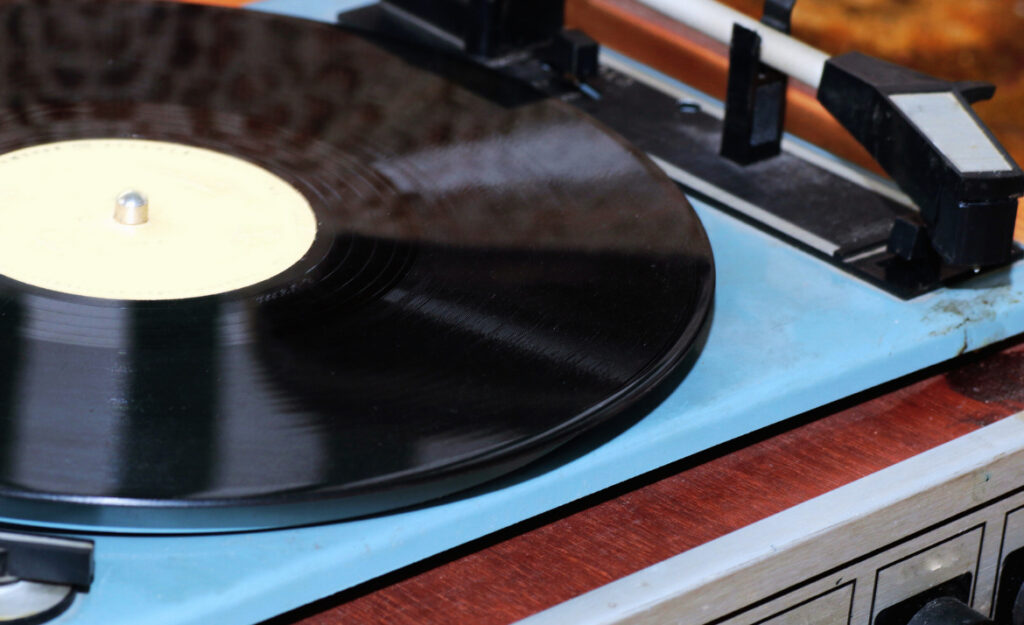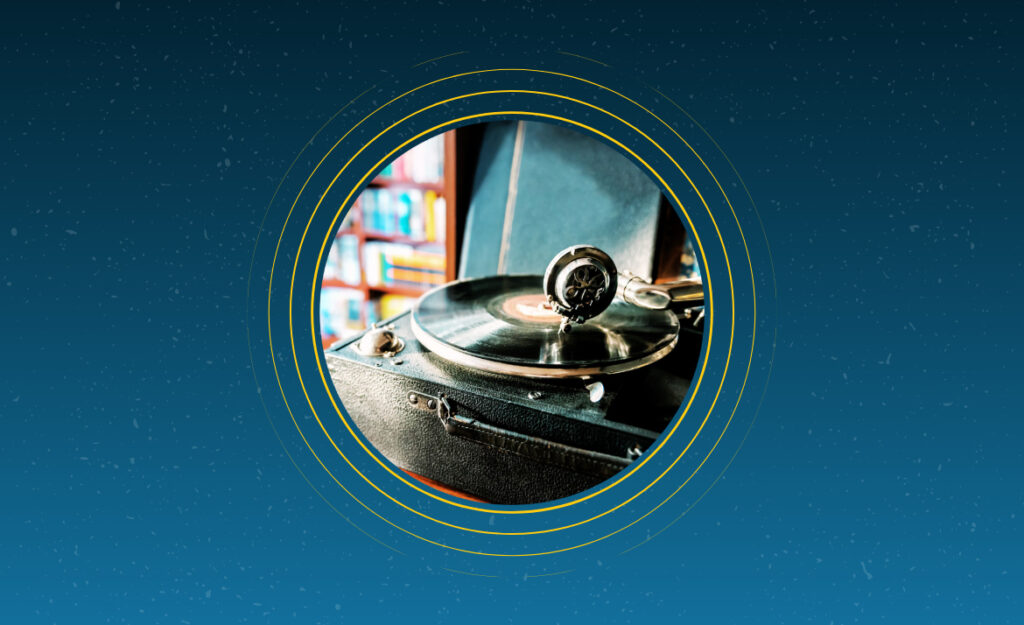
Flipping through your favorite vinyl, you might not realize you’re making critical turntable maintenance mistakes mid-spin. These subtle missteps lead to less-than-perfect sound and can shave years off your cherished records and gear.
Vinyl collecting has gone mainstream, but proper care remains surprisingly misunderstood. Dust, bad handling, and the wrong cleaning routines all add up, quietly eroding your sound quality and enjoyment. Avoiding these mistakes saves you money in the long run.
Explore the following sections to learn what to do differently, why your habits matter, and which small changes will keep your vinyl collection and turntable healthy for years. Dive in for straightforward, practical insight.
Improper Cleaning Routines Reduce Sound Quality
Following the right cleaning process keeps your vinyl playback clean and crisp every time. You’ll hear the difference when surface noise fades and clarity returns to each record.
Dust and grime kill fidelity and can even cause permanent groove damage if left unchecked. Mild mistakes compound—so the sooner you correct your methods, the better your results.
Choosing the Wrong Cleaning Tools Causes Microscopic Harm
Using the corner of a shirt or any paper-based material to wipe records feels quick, but it’s risky. Microfibers or soft, anti-static brushes are better; hard fabrics and rough cloths scratch surfaces.
“Just a gentle swipe won’t hurt, right?” seems harmless. But those small fibers cling to the groove, pulling at delicate vinyl walls. The effect builds over time, leaving faint haze and dullness in the music.
Switching to a carbon fiber brush before and after play solves most minor dust issues, while a proper cleaning fluid and rinse make deep cleaning both safe and effective. Swap old habits today.
Skipping Routine Maintenance Leaves Dust Embedded in Grooves
Avoid the temptation to only clean when visible dirt appears. Even a record that looks shiny collects tiny particles from the air and static static charges your vinyl naturally generates.
Set a schedule: brush records before and after every listen, and give each record a thorough wet cleaning every few months. This baseline limits deep groove buildup, protecting both stylus and music.
If you see a grayish film or the stylus starts skipping, you’re overdue for cleaning. Remember: regular attention now prevents expensive fixes later—both your records and stylus stay safe.
| Cleaning Tool | Effectiveness | Ease of Use | Best For | Takeaway Action |
|---|---|---|---|---|
| Microfiber Cloth | Medium | High | Surface Dust | Use for a quick dust-off, but not deep cleaning |
| Carbon Fiber Brush | High | High | Daily Dust | Brush before/after every play |
| Wet Cleaning Kit | Very High | Medium | Stubborn Grime | Use monthly on every record |
| Cleaning Machine | Excellent | Low | Serious Collectors | Invest for large collections |
| Paper Towels | Low | High | None | Avoid—causes scratches and static |
Poor Handling and Storage Shorten Vinyl Lifespan
Using specific handling and storage techniques ensures records stay playable for decades. Skipping these simple steps leads to bends, edge wear, and warping.
Handling vinyl edges with clean, dry hands minimizes fingerprint oils and static buildup. Always return records to quality sleeves after play and never stack them horizontally.
Essential Storage Rules for Vinyl Longevity
- Store records vertically to prevent warping; horizontal stacks lead to bowed discs and skipped grooves over time.
- Use inner sleeves made of anti-static material—paper sleeves encourage dust and friction, harming surfaces.
- Keep your collection away from direct sunlight and heat sources, both of which accelerate aging, soften vinyl, and distort sound.
- Maintain a stable, low-humidity environment; moisture can cause mold or label bubbling and damage sleeves.
- Allow airflow around storage racks. Crowding creates pressure points and encourages musty odors or mildew between jackets.
Increasing shelf space is worth it to ensure every record stands freely, undisturbed by neighbors. Give each album room to breathe and remain immaculate.
Common Handling Mistakes to Avoid
- Grabbing records by the grooves seems convenient but leaves skin oils that embed dust and accelerate static build-up.
- Placing records on bare surfaces, such as a desk or a tabletop, increases risk of scratches and particle transfer.
- Setting a stylus down hard can chip edges or flatten groove walls; always lower it gently with a cueing lever.
- Moving records in a rush or while stacked risks edge cracking—a tiny tick in playback signals structural stress.
- Neglecting to return vinyl to its sleeve after play leaves surfaces exposed, turning a clean record dusty overnight.
Practicing “touch only the edges” is a simple habit to protect every disc, regardless of value or rarity—consistency matters.
Neglecting Stylus and Cartridge Upkeep Degrades Sound
Cleaning and replacing your stylus and cartridge prolongs investment value and keeps music detailed. Even a single overlooked cleaning amplifies sound distortion and groove wear.
Rotating out a worn stylus before it splinters, chips, or flakes is critical. The more care you apply, the more every record session rewards you.
Simple Stylus Care Routine
After every session, dip the stylus gently in a pad of cleaning gel or brush with a soft, specialty stylus brush. This removes dust and microscopic particles before they accumulate.
Monthly, check under magnification for discoloration or flattened tips. A change in sound clarity or the appearance of a ‘harsh edge’ on playback usually means a replacement is due.
Upgrade cartridges every few years if possible for consistent tracking and fresher sound profiles. Major brands list recommended intervals tailored to tapers and stylus shapes.
Fine-Tuning Cartridge Alignment
Cartridge misalignment leads to channel imbalance, distortion, and record cutting noises. Use a protractor and tracking force gauge to set alignment before each listening streak.
Start by aligning the cartridge so its sides are parallel to the headshell and follow the gauge’s reading to fine-tune downforce within manufacturer specs. Too light or too heavy damages grooves and dulls the stylus tip.
Learning this process prevents costly errors and keeps your investment working optimally—plus, it can be deeply satisfying for any detail-oriented collector.
Skipping Turntable Setup Checks Causes Playback Issues
Completing setup and calibration steps per brand guidance keeps your turntable working as intended. Small misalignments lead to speed inconsistencies, tracking errors, and repeat wear on beloved LPs.
People sometimes rely on factory preset weights or plug-and-play settings, missing critical leveling or anti-skate adjustments. This shortcut introduces instability in playback, especially with vintage decks or aftermarket upgrades.
Alignment Process for Reliable Playback
Double-check platter level by placing a bubble gauge at the center. Adjust footers or platform blocks as needed to keep it dead flat—this ensures even groove contact across all records.
Follow specific tracking force instructions with a dedicated gauge, adjusting the counterweight. Listen for skipping or dulling by playing a complex or quiet passage; inconsistency means more tweaking is needed.
Confirm anti-skate settings by watching how quickly the tonearm moves when lowered between grooves. Uneven movement points to hidden resistance or miscalibration—reset as needed and re-test playback.
Anti-Skate and Speed Calibration Tips
Set anti-skate to match stylus tracking force. Incorrect values cause dragging or skipping. Test with a blank groove record if available; the arm should drift slowly but steadily inward.
Use a strobe disc or digital app to check platter rotation speeds. Ten minutes spent on calibration wipes out years of cumulative sound issues—steady rotation makes music feel locked in.
Calibrate these aspects every six months or after moving your deck, and always after swapping cartridges. Routine gives peace of mind and consistent audio delight.
Ignoring Environmental Factors Reduces System Performance
Controlling the listening environment shields your entire setup from unnecessary harm. Stable temperature and humidity prevent vinyl warping, while vibration control lets music shine without outside influence.
Loud bass, foot traffic, and nearby speakers all generate subtle movement—just like tapping a water glass, the results ripple through your stylus and are heard as hum or noise.
Minimizing Vibrations Around Your Setup
Place your turntable on a stable shelf or isolated platform—avoid hollow furniture or wobbly stands. Sorbothane pads under feet dampen stray movements from floors or closing doors.
Position speakers away from the deck and angle vibrations into the room rather than directly into the turntable cabinet. Even a rug between floor and system can muffle intrusive resonance.
After making changes, cue up a detailed passage to see if hum and distortion drop. Run the system while walking nearby; if the stylus skips, isolation improvements are needed.
Controlling Temperature and Humidity
Keep your collection and turntable in a climate-controlled room where temperature fluctuations are rare and humidity stays below 60 percent. If storage is in a basement or attic, use silica gel packs in cabinets to absorb excess moisture.
Check for signs of moisture or excessive dryness: labels bubbling, sleeves warping, or static pops are cues. Consistent, moderate climate protects the vinyl, mechanisms, and electronics alike.
Make this habit as routine as dusting or stylus care—environmental maintenance quietly preserves gear and media, saving future effort and dollars.
Using Poor Accessories Increases Wear and Reduces Enjoyment
Choosing accessories tuned to your system improves performance and longevity, rather than just adding clutter. Ill-matched mats, slipcovers, or cables can work against your best efforts.
When selecting mats and clamps, prioritize models recommended by your turntable maker. The wrong fit alters resonance and makes tracking errors more likely at every play.
Comparison Table for Popular Accessories
| Accessory | Typical Benefit | Common Issue | Recommendation |
|---|---|---|---|
| Cork Mat | Reduces static, cushions records | May deaden sound | Try for older decks or noisy environments |
| Rubber Mat | Stable grip, minimal resonance | Can attract dust | Use for modern turntables needing extra damping |
| Puck or Clamp | Flattens warped records | Can stress motor bearings | Apply only when needed for warped discs |
| Budget RCA cables | Easy upgrade or replacement | Introduces hum/interference | Invest in reliable, shielded cables |
| Outer Sleeve | Keeps jackets mint | Can increase static | Use anti-static sleeves for best results |
Conclusion: Building Enjoyment Through Good Habits
Each tip above helps you avoid small turntable maintenance mistakes that add up to big headaches. These concepts keep your records sounding clean while saving you from unexpected costs and disappointments.
Paying attention to details—from vinyl handling and storage to setup and environment—makes every session smoother and every favorite LP last longer. The effort is rewarded by clearer music and more reliable performance each time you listen.
Embrace a routine of cleaning, calibration, and climate care. Restore the original joy of vinyl collecting by making simple changes today—level up your system, and every spin feels brand new again.



